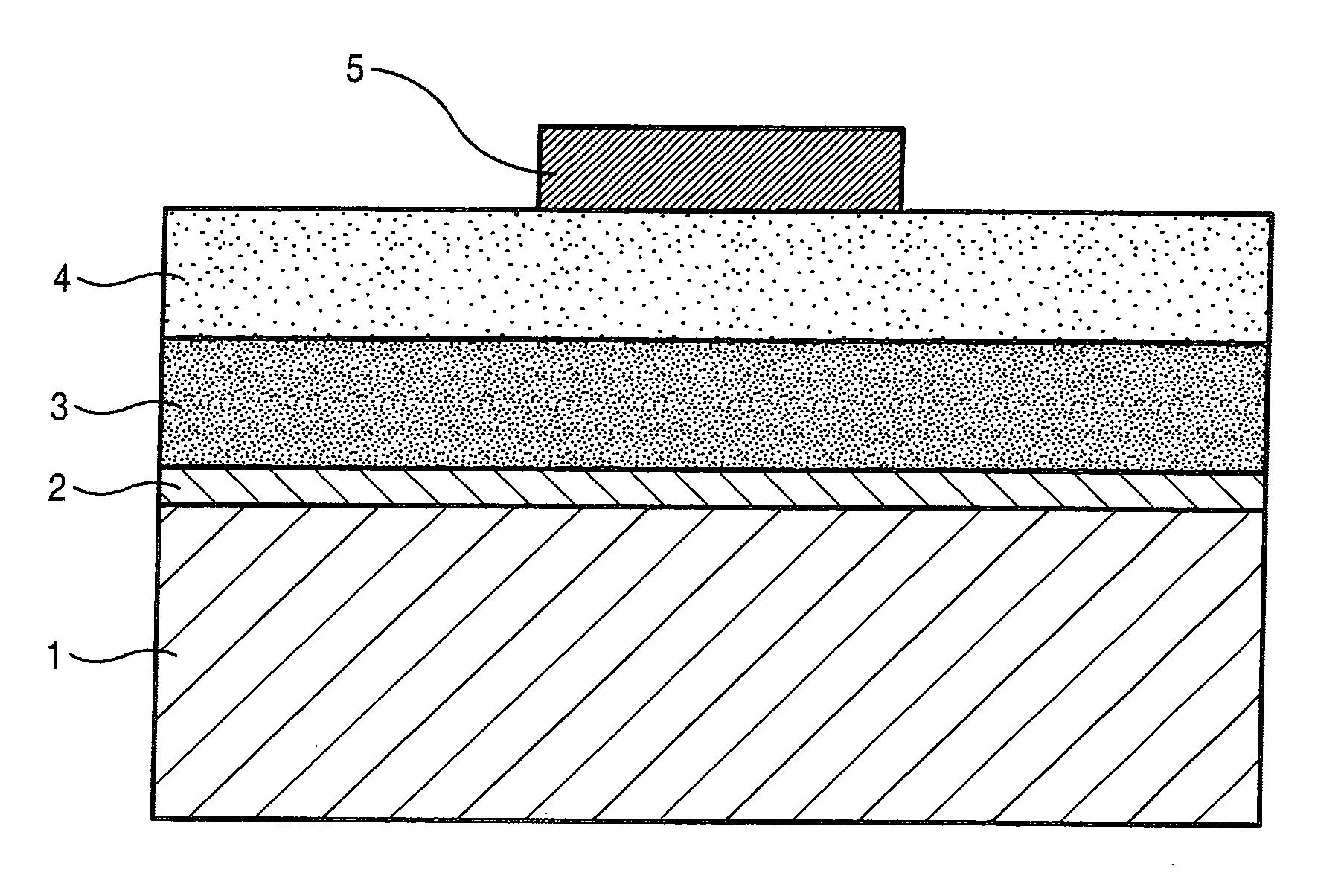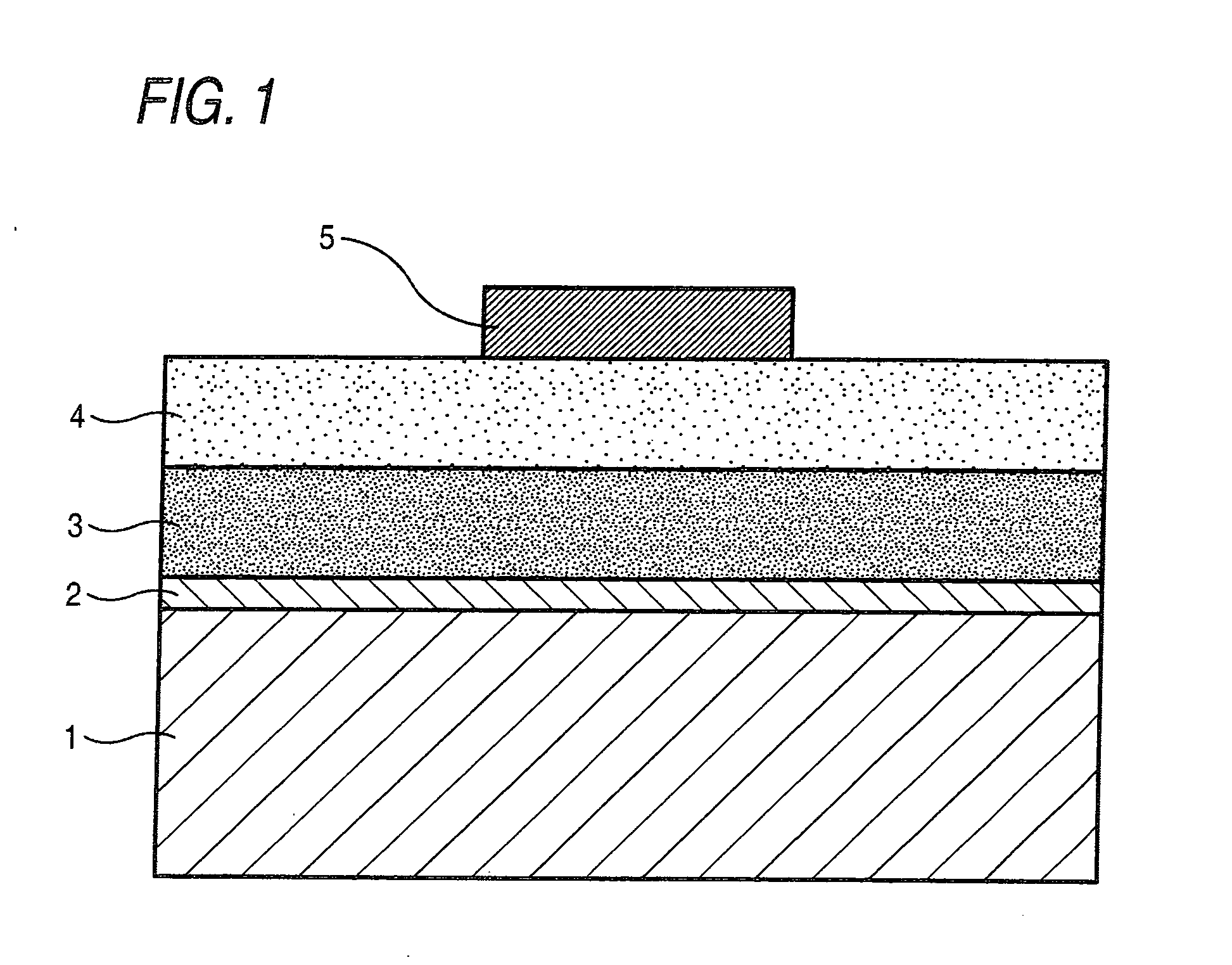Inorganic phosphor particle
- Summary
- Abstract
- Description
- Claims
- Application Information
AI Technical Summary
Benefits of technology
Problems solved by technology
Method used
Image
Examples
example 1
Sample A
[0092]Particulate powder of zinc sulfide (ZnS) in an amount of 25 g, dry powder of iridium chloride in an amount of 2×10−4 mole per mole with respect to the amount of zinc included in ZnS, flux powder composed of NaCl, MgCl2 and ammonium chloride (NH3Cl) in an appropriate amount and magnesium oxide powder in an amount of 10% by mass based on the phosphor powder were placed in an alumina crucible, burned at 1,150° C. for 2 hours, and then cooled. Into a glass jar of 15 mm φ, the particles having undergone the burning and 1-mm alumina balls were charged in the proportion of 5 g particle to 20 g alumina ball and subjected to ball milling of 60 minutes at a rotation speed of 10 rpm. Thereafter, separation of intermediate phosphor particles from the alumina balls was achieved by means of a 100-mesh sieve. To the intermediate phosphor particles separated, 5 g of ZnO and 0.25 g of sulfur were further added. The thus prepared dry powder was placed in an alumina crucible, and burned ...
example 2
[0100]Samples were prepared in the same manner as Sample C in Example 1, except that XIII Group-XV Group compounds, the species and addition amounts of which are set forth in Table 2, were added, respectively, after the grinding with the ball mill was carried out, and their photoluminescence intensities were measured. The measurement results are shown below. The photoluminescence intensities shown in Table 2 are also relative values, with Sample A being taken as 100. Additionally, each of Samples H to K was equivalent to Sample C in terms of incidence of stacking faults and wavelength of photoluminescence.
TABLE 2Species of XIII Group-XVGroup compoundIntensity of(doping amount, mol / molphotoluminescenceZn)producedSample HGaAs (2 × 10−4)780Sample IInP (2 × 10−4)810Sample JInSb (2 × 10−4)815Sample KGaN (2 × 10−4)795
[0101]As can be seen from Table 2, addition of any XIII Group-XV Group compound (any compound containing both of elements belonging to Group 13 and Group 15 in the periodic t...
example 3
[0102]Direct-current-drive inorganic EL devices were made using the inorganic phosphor particles of Sample C prepared in Example 1 and those of each of Samples H to K prepared in Example 2, respectively. A diagrammatic sketch of the structure of each direct-current-drive inorganic EL device is shown in FIG. 1.
[0103]A first electrode (2) as a transparent electrode was provided on a transparent glass substrate 1 through formation of a 200 nm-thick ITO layer by sputtering. On the first electrode (2), the inorganic phosphor particles of each of Sample C and Samples H to K were formed into a film by means of EB evaporation apparatus. More specifically, the inorganic phosphor particles of each sample were placed as a first evaporation source, and metallic selenium as a second evaporation source. The inorganic phosphor particles were evaporated at a constant film-formation rate from the first evaporation source and, in the first half of film formation, the metallic selenium was evaporated ...
PUM
 Login to View More
Login to View More Abstract
Description
Claims
Application Information
 Login to View More
Login to View More - R&D
- Intellectual Property
- Life Sciences
- Materials
- Tech Scout
- Unparalleled Data Quality
- Higher Quality Content
- 60% Fewer Hallucinations
Browse by: Latest US Patents, China's latest patents, Technical Efficacy Thesaurus, Application Domain, Technology Topic, Popular Technical Reports.
© 2025 PatSnap. All rights reserved.Legal|Privacy policy|Modern Slavery Act Transparency Statement|Sitemap|About US| Contact US: help@patsnap.com


